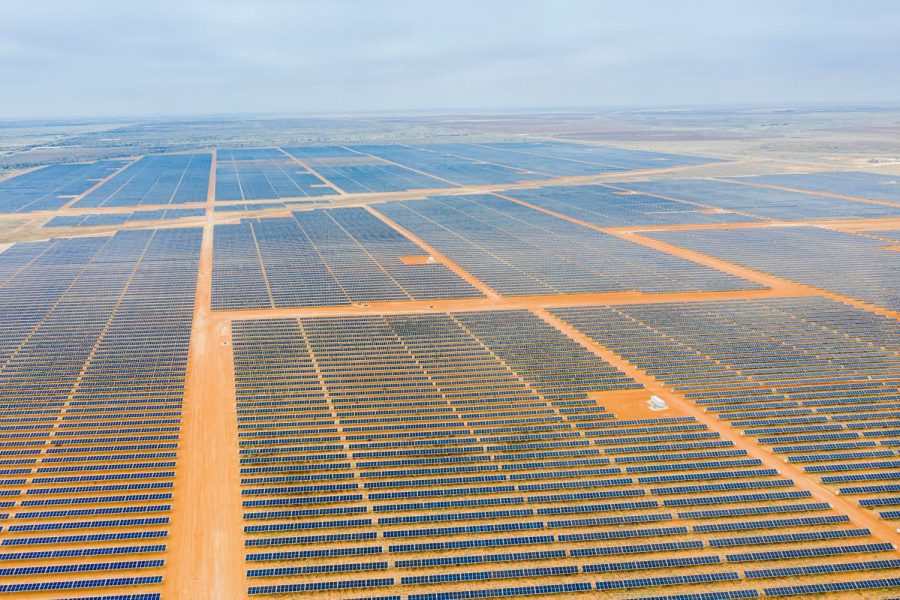Austin’s Edge in Energy
April 14, 2020
Renewable Energy is the fastest-growing energy source in the US. While there are hurdles that stand in the way of its continued growth, energy experts point to renewables as the energy of the future. Coinciding with nationwide growth, Texas’ renewable energy sources became prominent in the market, and Austin is showing promise to emerge as a hub for this growing industry.
Austin’s residential and commercial energy provider, Austin Energy, has announced its goals to push Austin towards renewables. Michael Enger is an Energy Market Manager at Austin Energy and says he is familiar with how renewables are going to fit into Texas’ current energy market.
“Austin Energy has one of the most aggressive renewable goals in Texas as well as in the country,” Enger said.” We have goals to be 55% renewable by 2025 and 65% renewable by 2027. Austin Energy is working hard to deliver clean, affordable power to our customers and in doing so we are looking to be a leader in renewable energy in Texas.”
Patrick Worrall, the Vice President of Project Finance at Level 10 Energy, believes that Austin has unique attributes that have allowed it to attract many renewable firms. He said that Houston has traditionally served as the center of Texas’ energy market, but the rise of renewables is allowing Austin’s energy sector to grow.
“I think that Austin for the new energy era has provided a different vibe and a different atmosphere than the city of Houston,” Worrall said. “A lot of the renewable energy companies were founded in San Francisco, New York, or other places and as they grew and felt the need to come to one of the biggest energy markets, which is the Ercot energy market, they needed to choose a home location and Austin is very amenable and folks want to move here rather than Houston or Dallas.”
The Texas energy market has experienced a lot of change in the past decade, says Senior Director of Marketing from 7X Energy, Raheleh Folkerts. Folkerts says the trend is towards the growth of renewables and points to Austin as a frontrunner in the nationwide shift away from fossil fuels.
“The greatest energy shift is moving away from coal to renewable energy,” Folkerts said. “The changes we’ve seen in Austin reflect the clean energy transition we’re seeing nationwide. Austin Energy has a goal of 750 megawatts of utility-scale solar by 2025 and they are projected to beat that target date. Recently, Austin Energy reported that 10,000 Electric Vehicles are on Austin’s roads, an annual average increase of 39% over the past five years.”
Paul Ksiazek, Senior Project Director at Diode Ventures, said he has a long history in the power industry and currently works in the development of renewable projects. Ksiazek said that strong demand for renewable energy by modern companies is driving the transition to renewable energy sources, making the permanent shift inevitable.
“I made a real push to stay 100% involved with renewable energy because it was clear that this wasn’t just going to be a temporary shift in the power industry,” Ksiazek said. “This was going to be a permanent shift. And that’s not just in the US; that’s worldwide. More and more corporations like Amazon, Google and Facebook want 100% renewable energy and that’s a big load. We work with Amazon, which by 2024 wants 80% and that’s an enormous amount of renewable energy.”
Although renewable energy has seen growth and increased demand, its proliferation has brought with it a set of unique challenges. Worrall said renewable power sources often deliver inconsistent energy to the grid.
“The challenge of renewables is that the sun doesn’t always shine and the wind doesn’t always blow,” Worrall said. “It’s what is called intermittent power. The difficulty is filling the gaps when the wind is not blowing and the sun is not shining.”
Storage solutions are a way to mitigate the issue of intermittent power. Ksiazek said that batteries have the potential to solve the issue of storage and push the renewable market towards even more growth.
“The thing that is going to make it so renewables can clearly replace fossils is the cost of batteries coming down,” Ksiazek said. “If you combine a battery with a solar panel or a battery wind farm, you can truly have 24-hour power that’s a renewable resource. Now, we aren’t there cost-wise yet, but once the cost of the battery comes down I think it’s going to be a reality and you are going to see the permanent shutting down of, certainly coal, and even some gas-fire generation.”
At the root of the renewable shift is the environmental ramifications of traditional fuel sources. Ksiazek said that renewable energy is necessary to maintain a sustainable planet.
“It’s a burgeoning area,” Ksiazek said. “Renewables are great for your generation. It’s all about clean energy and sustainability. There’s only so much gas in the ground. There’s only so much coal in the ground… This is why more and more companies, as well as more and more countries, are turning to renewables.”


